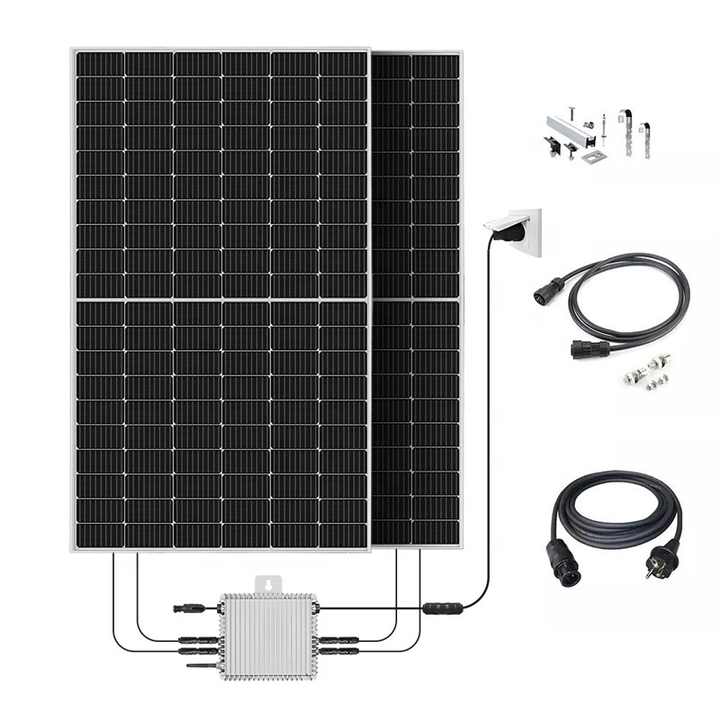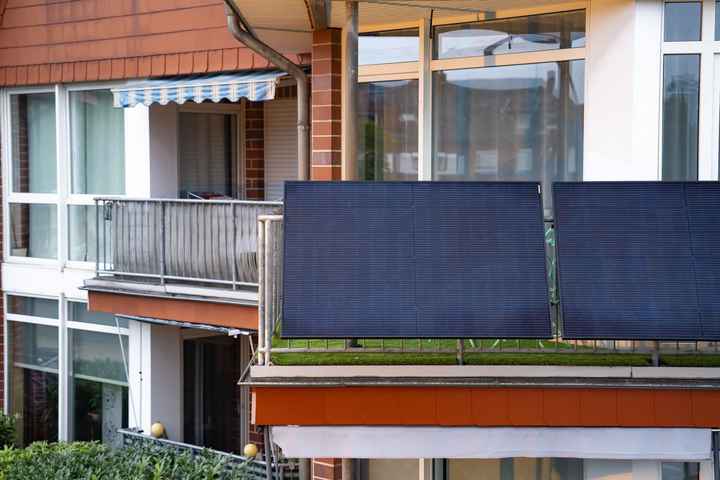Yes, you can put solar Panels on your balcony. Solar panels on balconies are becoming increasingly popular, especially in urban areas where space is limited. They provide a great way to generate your electricity, reduce your carbon footprint, and save on energy bills. It’s crucial to think about a few crucial elements before getting started. These include your balcony’s sun exposure, the weight capacity of your balcony, and local regulations. With the right planning, you can effectively turn your balcony into a small, eco-friendly power station!

Understanding Balcony Solar Panels
Balcony solar panels offer a smart, eco-friendly way to harness solar energy, especially in urban areas. These compact panels easily fit onto apartment balconies, capturing sunlight to generate electricity. They’re perfect for renters or those with limited space. Installation is simple, often requiring just a few steps. First, position the panels to face the sun, maximizing exposure. Then, connect them to an inverter, converting solar energy into usable electricity. This setup can power small appliances, charge devices, or reduce overall electricity bills. Balcony solar panels also promote sustainable living. You’re making the world a greener place by using renewable energy.
Types of Balcony Solar Panels
Exploring balcony solar panels reveals a variety of types, each with unique features:
Monocrystalline Panels: These high-efficiency panels are ideal for small spaces like balconies. They provide excellent energy output, making them a top choice for maximizing limited space.
Polycrystalline Panels: These are more budget-friendly and suitable for beginners in solar energy. While slightly less efficient, they effectively meet smaller energy needs.
Thin-Film Solar Panels: Known for their flexibility and light weight, these panels are perfect for balconies with weight limitations. They can adapt to different surfaces, offering versatility in urban settings.
Portable Solar Panels: Great for renters, these panels allow for mobility. You can easily adjust their position for optimal sun exposure or take them along if you move.
Integrated Solar Panel Systems: These blend with your balcony’s design, enhancing aesthetics along with functionality. Often in the form of tiles or shingles, they integrate smoothly with your balcony’s floor or railing.
Pros and Cons of Balcony Solar Panels
Balcony solar panels are gaining popularity as a sustainable energy source, especially in urban areas. Understanding their pros and cons helps in making an informed decision.
Pros of Balcony Solar Panels
Eco-Friendly Energy Source: They use renewable energy from the sun, reducing reliance on fossil fuels and lowering carbon emissions.
Cost Savings: Over time, these panels significantly reduce electricity bills by generating free solar power.
Ideal for Urban Settings: Perfect for city dwellers, they make use of limited space available on balconies.
Easy Installation: Most balcony solar panels are easy to install, requiring minimal technical skills.
Portable and Flexible: Renters benefit from portable designs that can be moved as needed.
Low Maintenance: They require little upkeep, mostly cleaning and occasional checks.
Increases Energy Independence: Using these panels can decrease dependence on traditional power grids.
Potential Government Incentives: Some regions offer incentives or rebates for using solar energy.
Technological Advancements: Ongoing improvements in solar technology increase efficiency and affordability.
Aesthetic Appeal: Some modern designs can enhance the look of your balcony.
Cons of Balcony Solar Panels
Limited Energy Production: They can’t produce as much energy as larger rooftop systems due to size and placement limitations.
Dependent on Weather Conditions: Their efficiency drops on cloudy or rainy days.
Initial Costs: The upfront investment can be substantial, although prices are decreasing
Space Limitations: Not all balconies are suitable due to size, orientation, or structural constraints.
Possible Restrictions: Some landlords or housing associations may have rules against installing solar panels.
Energy Storage Issues: Storing excess energy requires batteries, which can be expensive and need space.
Aesthetic Concerns: Some people may find them visually unappealing.
Less Efficient in Winter: Shorter days and lower sun intensity reduce their efficiency in colder months.
Installation Challenges: Incorrect installation can lead to reduced efficiency or damage.
Wildlife Disruption: Birds may nest under panels, leading to maintenance issues.
Balcony solar panels offer a practical and eco-friendly solution for urban residents to contribute to sustainable energy practices. They are especially beneficial for those looking to reduce their carbon footprint and electricity bills.

How to install solar panel on my balcony?
Installing a solar panel on your balcony is a great way to harness renewable energy. To assist you with the procedure, below is a step-by-step guide:
Understand Your Energy Needs: Start by assessing how much power you want to generate. This step determines the size and number of panels you need.
Choose the Right Solar Panel: Research different types of panels. Consider factors like efficiency, size, and cost. For balconies, portable or thin-film solar panels are often best due to their flexibility and weight.
Check Local Regulations: Before you begin, ensure you comply with local building codes and regulations. Some areas might require permits for solar panel installations.
Assess Your Balcony’s Suitability: Check your balcony’s orientation. South-facing balconies in the Northern Hemisphere catch the most sun. Also, ensure the structure can support the weight of the panels.
Acquire the Necessary Components: Besides the solar panels, you’ll need an inverter to convert the solar power into usable electricity, mounting brackets, and wiring.
Plan the Layout: Arrange your panels to maximize sun exposure. Avoid shaded areas. Consider the path of the sun throughout the day and season.
Install Mounting Brackets: Securely fix the brackets to your balcony. Ensure they are sturdy and properly aligned. To stop water damage, use waterproof sealers.
Mount the Solar Panels: Carefully place the solar panels onto the brackets. Ensure they are sturdy and firmly attached.
Install the Inverter: The inverter converts the solar energy into electricity. Place it in a cool, shaded area to prevent overheating.
Wire the Panels to the Inverter: Connect the solar panels to the inverter using the appropriate wiring. Ensure all connections are tight and secure.
Connect to Your Home Power Supply: You can either connect the inverter to your home’s power grid or use a battery system for energy storage.
Ground the System: For safety, properly ground your solar panel system. This step is crucial to protect against electrical surges or lightning strikes.
Test the System: Once everything is connected, test the system to ensure it’s working correctly. Check the inverter’s display to monitor power output.
Regular Maintenance: Regularly clean the panels and check for any damage or loose wiring. Proper maintenance ensures optimal performance.
Monitor Energy Production: Keep an eye on how much energy your panels are producing. This monitoring helps you understand your system’s efficiency and make any necessary adjustments.
The installation of balcony solar panels should be a careful and considered process. If you’re not confident in your abilities to safely install the system, it’s wise to consult with or hire a professional. Not only will this ensure your system is correctly installed, but it also ensures your safety and the longevity of your solar panels.
